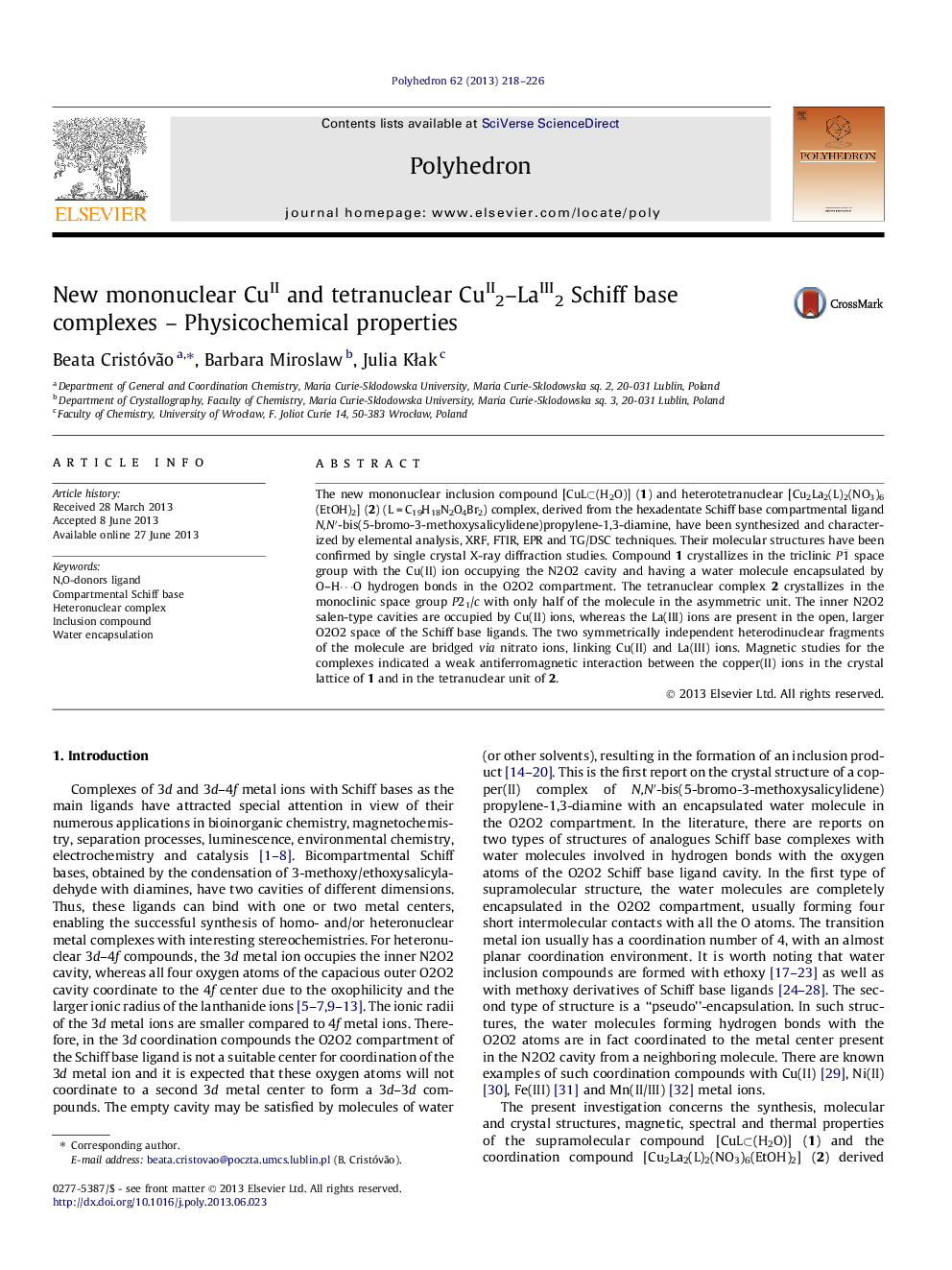| کد مقاله | کد نشریه | سال انتشار | مقاله انگلیسی | نسخه تمام متن |
|---|---|---|---|---|
| 1337208 | 1500277 | 2013 | 9 صفحه PDF | دانلود رایگان |

The new mononuclear inclusion compound [CuL⊂(H2O)] (1) and heterotetranuclear [Cu2La2(L)2(NO3)6(EtOH)2] (2) (L = C19H18N2O4Br2) complex, derived from the hexadentate Schiff base compartmental ligand N,N′-bis(5-bromo-3-methoxysalicylidene)propylene-1,3-diamine, have been synthesized and characterized by elemental analysis, XRF, FTIR, EPR and TG/DSC techniques. Their molecular structures have been confirmed by single crystal X-ray diffraction studies. Compound 1 crystallizes in the triclinic P1¯ space group with the Cu(II) ion occupying the N2O2 cavity and having a water molecule encapsulated by O–H⋯O hydrogen bonds in the O2O2 compartment. The tetranuclear complex 2 crystallizes in the monoclinic space group P21/c with only half of the molecule in the asymmetric unit. The inner N2O2 salen-type cavities are occupied by Cu(II) ions, whereas the La(III) ions are present in the open, larger O2O2 space of the Schiff base ligands. The two symmetrically independent heterodinuclear fragments of the molecule are bridged via nitrato ions, linking Cu(II) and La(III) ions. Magnetic studies for the complexes indicated a weak antiferromagnetic interaction between the copper(II) ions in the crystal lattice of 1 and in the tetranuclear unit of 2.
The new compounds [CuL⊂(H2O)] (1) and [Cu2La2(L)2(NO3)6(EtOH)2] (2), derived from N,N′-bis(5-bromo-3-methoxysalicylidene)propylene-1,3-diamine, were obtained and their physicochemical properties were investigated. In compound 1, the Cu(II) ion occupies the inner N2O2 salen-type cavity of the Schiff base, whereas the water molecule is encapsulated by O–H⋯O hydrogen bonds in the larger O2O2 compartment of this ligand. In the bimetallic heterotetranuclear complex 2, the N2O2 cavities of the organic ligand are also occupied by Cu(II) ions, whereas La(III) ions are present in the O2O2 cavities. Moreover, the two symmetrically independent heterodinuclear fragments of this molecule are bridged via nitrato ions linking the 3d and 4f ions. The measurements of variable-temperature magnetic susceptibility as well the relationship between the magnetization and magnetic field strength in 1 and 2 revealed weak antiferromagnetic interactions between the CuII magnetic centers at low temperature.Figure optionsDownload as PowerPoint slide
Journal: Polyhedron - Volume 62, 7 October 2013, Pages 218–226